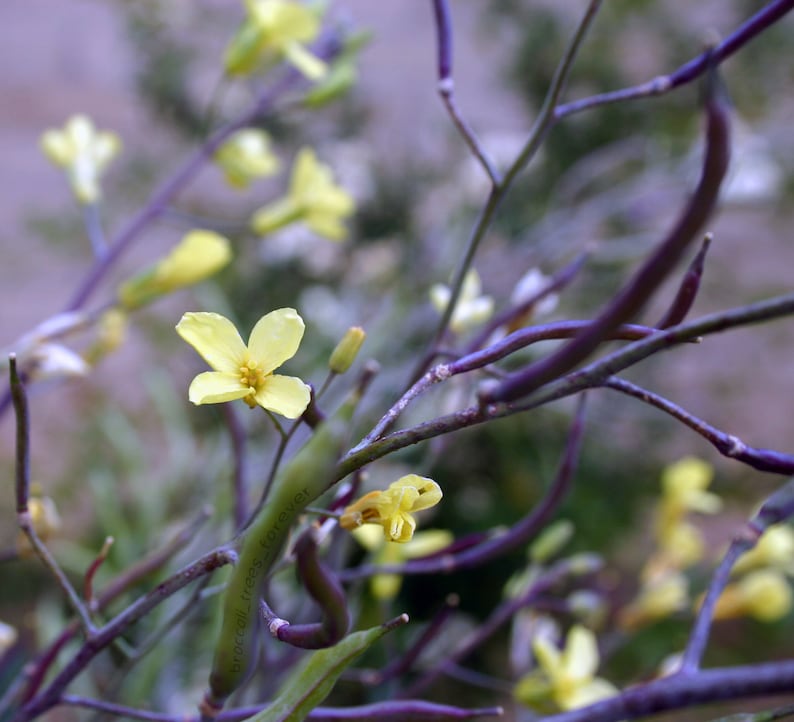
Once you have your own plant established you can easily make your own cuttings to produce more plants for yourself and others. You could try them in colder climates, but you might have to get creative either bringing them into a greenhouse for the cold season, or taking cuttings before winter and setting out newly rooted plants in the spring. With irrigation they should be fine in much of the Southwest as well, though they will do best in the cooler months. We have heard of people successfully growing tree collards all along the Pacific coast, and South/Southeastern regions of the US. They are high in Vitamins B1, B2, B9, C, and beta-Carotene and are a great source of fiber. Like other collard greens, Purple Tree Collards are very nutritious. In addition to humans, chickens and ducks love to eat tree collards and their egg yolks will turn a brilliant orange. They are very productive and tend to be more disease and pest resistant. Many people find that the flavor of Purple Tree Collards is superior to traditional collard greens. They can survive temperatures down to around 20 degrees Fahrenheit. They turn darker purple tones in cool months and are lighter green in warm months. They can get over eight feet in height and will continue to grow and produce year after year. Purple Tree Collards are a perennial vegetable related to collard greens. You may wish to pot them up in a one gallon container for a week or two upon arrival, but they can be transplanted directly into a garden bed as well. They are growing in small 2″ degradable peat pots. This listing is for three rooted Purple Tree Collard plants shipped USPS Priority Mail for gardeners who want to skip having to root their own cuttings (which can take a month or longer). Collard leaves are sweeter when they are harvested after frost.Imagine never having to go to the store to buy greens again! Harvest the outer leaves to avoid damaging the growing tip of the plant. Apply an appropriate complete fertilizer when thinning seedlings.Ĭollard greens can be harvested about 2 months after planting. Collards are heavy feeders, requiring plentiful nitrogen to meet their growth requirements and develop optimally. The plants have shallow roots and in order to avoid damaging them, it is preferable to hand pull any weeds growing around the plants. The plantings can be staggered in 2 week intervals to prolong the harvest.Ĭollards should be kept evenly watered, application of mulch around plants helps to conserve soil moisture. Plant each seedling slightly deeper than it was previously. Seedlings should be planted at the final spacing for seeds (30–60 cm/12–24 in between plants and 0.6 to 1.2 m/2–4 ft between rows). Seedlings started indoors or in a cold frame are ready to be transplanted when they have 5–6 true leaves. Keep soil moist during germination to prevent a crust from forming on the soil surface as this will cause uneven germination.

Thin seedlings to a final within row spacing of 30–60 cm (12–24 in). Plant seeds 6 mm (0.25 in) deep allowing 3.5 cm (1 in) between plants in the row, allowing 0.6–1.2 m (2–4 ft) between rows. Prepare the soil for planting through the addition of nitrogen in the form of bone meal or composted manure. For Fall harvest, plant collard seeds in July so that the plants develop in cooler weather. Collard seeds should be planted after any danger of hard frost or in a cold frame for transplanting to their final location. The optimum soil temperature for germination is between 12 and 24☌ (55–75☏). Collard greens requires at least six hours of direct sunlight every day.Ĭollard greens can be direct seeded or started indoors for transplants. The plants will grow optimally in a rich, moist, well draining soil with a pH of 6.5. Collards are very hardy and will tolerate frost.

The plant will grow best at temperatures between 4 and 21☌ (40–50☏) allowing it to be grown in both Spring and Fall. Collard greens are a cool season crop that grow best in cool, moist conditions.


 0 kommentar(er)
0 kommentar(er)
